articles by Victor Adrian Jimenez
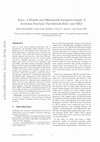
arXiv, 2024
Even in recent neural network architectures such as Transformers and Extended LSTM (xLSTM), and t... more Even in recent neural network architectures such as Transformers and Extended LSTM (xLSTM), and traditional ones like Convolutional Neural Networks, Activation Functions are an integral part of nearly all neural networks. They enable more effective training and capture nonlinear data patterns. More than 400 functions have been proposed over the last 30 years, including fixed or trainable parameters, but only a few are widely used. ReLU is one of the most frequently used, with GELU and Swish variants increasingly appearing. However, ReLU presents non-differentiable points and exploding gradient issues, while testing different parameters of GELU and Swish variants produces varying results, needing more parameters to adapt to datasets and architectures. This article introduces a novel set of activation functions called Zorro, a continuously differentiable and flexible family comprising five main functions fusing ReLU and Sigmoid. Zorro functions are smooth and adaptable, and serve as information gates, aligning with ReLU in the 0-1 range, offering an alternative to ReLU without the need for normalization, neuron death, or gradient explosions. Zorro also approximates functions like Swish, GELU, and DGELU, providing parameters to adjust to different datasets and architectures. We tested it on fully connected, convolutional, and transformer architectures to demonstrate its effectiveness.
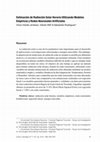
Revista Ciencia y Tecnología, 2017
La radiación solar es uno de los parámetros más importantes para el desarrollo de aplicaciones e ... more La radiación solar es uno de los parámetros más importantes para el desarrollo de aplicaciones e investigaciones relacionadas a energías renovables. Sin embargo, la adquisición de mediciones de radiación solar no siempre es posible por diferentes motivos y es necesario contar con modelos que permitan estimarla. Estos modelos en su mayoría utilizan variables climáticas difíciles de medir y que no siempre están disponibles en todos los sitios. El objetivo de este trabajo es aplicar un método para estimar radiación solar horaria, basado en redes neuronales, utilizando como variables de entrada estimaciones de radiación solar obtenidas mediante un modelo matemático simple y variables climáticas de fácil adquisición: Temperatura, Presión y Humedad. Además, para comprobar que las redes neuronales son más adecuadas en estos casos se hizo una comparativa con estimaciones realizadas con regresión lineal. Los modelos generados fueron ajustados y validados con datos provenientes de cinco estaciones meteorológicas de la provincia de Tucumán, Argentina, logrando obtener en promedio un error de 11.0\% (Root Mean Squared Error) con regresión lineal y 7.84\% con redes neuronales.
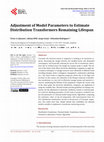
Smart Grid and Renewable Energy, 2018
Currently, the electrical system in Argentina is working at its maximum capacity, decreasing the ... more Currently, the electrical system in Argentina is working at its maximum capacity, decreasing the margin between the installed power and demanded consumption, and drastically reducing the service life of transformer substations due to overload (since the margin for summer peaks is small). The advent of the Smart Grids allows electricity distribution companies to apply data analysis techniques to manage resources more efficiently at different levels (avoiding damages, better contingency management, maintenance planning, etc.). The Smart Grids in Argentina progresses slowly due to the high costs involved. In this context, the estimation of the lifespan reduction of distribution transformers is a key tool to efficiently manage human and material resources, maximizing the lifetime of this equipment. Despite the current state of the smart grids, the electricity distribution companies can implement it using the available data. Thermal models provide guidelines for lifespan estimation, but the adjustment to particular conditions, brands, or material quality is done by adjusting parameters. In this work we propose a method to adjust the parameters of a thermal model using Genetic Algorithms, comparing the estimation values of top-oil temperature with measurements from 315 kVA distribution transformers, located in the province of Tucumán, Argentina. The results show that, despite limited data availability, the adjusted model is suitable to implement a transformer monitoring system.
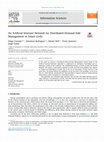
Information Sciences, 2018
In this work we present a Distributed Demand-Side Management system based on the Artificial Immun... more In this work we present a Distributed Demand-Side Management system based on the Artificial Immune Network algorithm. It implements an intelligent, distributed and autonomous control of the customer’s Air Conditioning devices in order to meet the desired demand. The system is particularly adapted to tackle the Peak Load problem that appears in Tropical and Subtropical climates due to the use of thousands of these devices at the same time. The design follows the guidelines set by the Smart Grid paradigm, in the sense that it is fault tolerant, distributed and self-controlled. It requires minimal communication infrastructure when compared to a centralized system. The algorithm was evaluated using synthetic and real data. We define Maximal and Average Tolerance as performance metrics, and show that the system keeps the consumption within 1\% of the given load limit in all 5 cases.
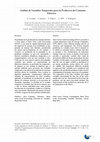
Revista Técnica Energía, 2015
Short Term Load Forecasting (STLF) currently is a major importance issue for Energy Companies. ST... more Short Term Load Forecasting (STLF) currently is a major importance issue for Energy Companies. STFL allows a more efficient manage and use of resources and equipment. The electric demand prediction is a complex issue, since it depends or is related to economic factors, climate and time to mention a few. Furthermore, its behaviour changes from one society to another. Each factor provides a particular variable that could be presented in different forms, particularly the time variables. In this paper we present the hypothesis that the way an input variable is introduced to an energy prediction system affects the result. To validate this hypothesis, different methods to represent time variables were considered and applied to the prediction problem of daily electric consumption in Tucumán, a province of Argentina. The separation of the time variables into single variables representing the day, day of the week, month and year for each period involved into the problem, was the most convenient method. The improvement of this method was about the 10 \% in comparison to the others.
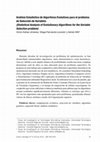
Ciencia y Tecnología, 2019
Durante décadas de investigación en problemas de optimización, se han desarrollado innumerables a... more Durante décadas de investigación en problemas de optimización, se han desarrollado innumerables algoritmos, tanto determinísticos como heurísticos. Aun así, debido a este amplio abanico de posibilidades resulta una tarea compleja determinar cuál de ellos es más adecuado para un problema específico. Se propone en este trabajo una comparativa entre diferentes algoritmos heurísticos de optimización haciendo uso de test estadísticos. Se consideró Simulated Annealing (SA), Algoritmo Genético Simple (sGA), Algoritmos Genético Compacto (cGA) y Deterministic Crowding (DC) aplicados al problema de Selección de Variables para Estimación utilizando Regresión Lineal. Se utilizaron tres casos de prueba, que consisten en la estimación de Radiación Solar, Consumo Eléctrico en la provincia de Tucumán (Argentina), y el tiempo de reaparición de células cancerígenas. Se comprobó que existe suficiente evidencia estadística para afirmar que los algoritmos arrojan resultados significativamente diferentes. Además se concluye que sGA y DC son los algoritmos más apropiados para estos problemas, permitiendo obtener valores de fitness similares siendo sGA ligeramente superior.

A new data-driven method based on Niching Genetic Algorithms for phase and substation identification
Electric Power Systems Research, 2021
Knowledge about the customers’ phase connections is strategic and critical for utility companies.... more Knowledge about the customers’ phase connections is strategic and critical for utility companies. It allows them to optimize maintenance and repair operations, implement load balancing, and detect losses, among other benefits. However, this information may be incomplete or outdated due to the undocumented changes in the Low Voltage network. Several methods have been proposed to estimate it. Methods based on data analysis stand out because they do not require costly specialized equipment. This work presents a new method for Phase Identification and Transformer Substation Detection for single-phase customers. Unlike previous approaches, we address the problem through a heuristic optimization, using an Evolutionary Algorithm based on Deterministic Crowding and correlation analysis on load measurements. The algorithm was designed to work with low penetration of smart meters and missing data, obtaining better results in shorter periods. The method was tested using both a public dataset and a dataset from Tucumán province, Argentina. We obtained an average accuracy above 95\% on 21 days if almost 30\% of the smart meters are available (200 customers in total). In contrast, only 5 days are required to reach the same accuracy if more than 80\% of smart meters are available.

Phase reassignment for load balance in low-voltage distribution networks
International Journal of Electrical Power & Energy Systems, 2021
Load balancing is one of the most widely used techniques to reduce losses and improve service qua... more Load balancing is one of the most widely used techniques to reduce losses and improve service quality in low-voltage networks. Many methods have been proposed, including the customer phase reassignment, which has multiple advantages. However, its application represents a real challenge if the data availability is limited (only a few variables from some nodes are measured). This paper presents a new method for load balancing on a three-phase feeder by switching the phase connection of single-phase customers. It is based on Deterministic Crowding, a variant of Genetic Algorithms with few and easily adjustable parameters. In contrast to related works, we establish an imbalance target value and minimize the number of customers required to switch. The proposed method requires the phase current profiles from only a percentage of the customers, reducing the number of smart meters necessary and the related investment. The method was validated using real data, analyzing different scenarios with different percentages of measured customers compared on the basis of imbalance index, neutral current, and transformer lifespan reduction. Results show a significant improvement in load balancing with few changes, even when only 30\% of customers are measured.
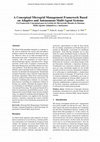
Journal of Computer Science and Technology, 2022
The Smart Grids paradigm emerged as a response to the need to modernize the electric grid and add... more The Smart Grids paradigm emerged as a response to the need to modernize the electric grid and address problems related to the demand for better energy quality. However, there are no fully developed and implemented smart grids. Centralized systems are still common, with a low granularity of control and reduced monitoring capacity, especially in low-voltage networks. In this work, we propose a framework for Microgrid Management, providing solutions for three main problems: Peak Shaving addressed with a distributed control algorithm based on Artificial Immune Systems for demand-side management; Transformer Lifespan Estimation using a thermal model adjusted by Genetic Algorithms; Short-Term Load Forecasting based on Artificial Neural Networks and Genetic Algorithms. Combining these solutions, we can reduce peak loads by controlling air conditioners without affecting user comfort, determine the negative effects of overloading on distribution transformers and provide demand forecasting. The proposed framework is based on autonomous and distributed systems, so the Organization Centered Multi-Agent Systems methodology was applied for modeling and development. The implemented solutions were applied in the Tucumán province, Argentina, exposing the system’s benefits and the relevance of the information generated by the framework.

Optimal Allocation of Phase-Switching Devices for Dynamic Load Balancing
Electrical Engineering, 2022
Customer rephasing is one of the most efficient techniques for balancing loads, reducing losses, ... more Customer rephasing is one of the most efficient techniques for balancing loads, reducing losses, and improving electricity quality. Traditionally, phase changes were performed by an operator, interrupting the supply during the process. Instead, a more recent approach proposes using phase switching devices that dynamically and imperceptibly transfer the customer load from one phase to another. Although this solution requires an extra investment related to these devices, it preserves the balance over time. This paper presents a new method to determine the minimum number of devices that should be installed and find their optimal allocation. The method is based on Genetic Algorithms and only uses data from the substation and a fraction of the customers, requiring less than 50\% of penetration of smart meters to fix the imbalance problem. A new control algorithm for the switching devices is also proposed. It was designed to reduce the load imbalance while maintaining the number of changes per customer to a minimum, reducing device degradation. The method was validated through simulations using data from Tucumán province, Argentina. With at least 40\% of the customers measured, it is possible to allocate the switches to less than 20\% of customers and correctly reduce the load imbalance.

Phase identification and substation detection using data analysis on limited electricity consumption measurements
Electric Power Systems Research, 2020
One of the most common problems in the electricity sector is the lack of accurate information abo... more One of the most common problems in the electricity sector is the lack of accurate information about the structure of the low-voltage distribution network, particularly the association between the customers and the substation’s phases. Identifying to which substation’s phase each customer is connected reduces the response time to contingencies, improves the detection of technical and non-technical losses, and enables the application of load balancing techniques, among other benefits. This paper presents a new method for phase identification and substation detection based on a correlation analysis of the variations of load consumption. Our method achieves accurate results with much fewer samples than the previous works, which is effective even if there are a low percentage of smart meters installed and missing data. We use statistical tests to avoid getting erroneous results from non-significant correlations values. It was tested on a public dataset and validated using real measurements from a neighborhood in Tucumán, Argentina. In the case of 200 customers and one to four weeks of data, we obtained an average accuracy of 80–95\% if only 50\% of the customers are measured, or 93–98\% if all the customers are measured.
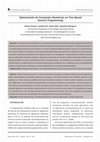
Tecnología y Ciencia, 2015
La Programación Genética (PG) es un conjunto de técnicas de computación evolutiva basadas en Algo... more La Programación Genética (PG) es un conjunto de técnicas de computación evolutiva basadas en Algoritmos Genéticos, que permiten resolver problemas mediante la generación automática de programas. La PG ha demostrado ser un método eficiente para encontrar soluciones a una gran variedad de problemas donde se cuenta con una función objetivo o tarea a realizar. Sin embargo, una de las principales dificultades que presenta es la exploración y optimización de constantes numéricas (o parámetros). Este trabajo se enfoca en la investigación e implementación de distintos métodos para la optimización de dichas constantes, utilizando un framework de Tree-GP. Se eligió la Regresión Simbólica como aplicación debido a la clara necesidad de encontrar constantes precisas. Los métodos fueron probados en un conjunto de benchmarks, y se determinó que la herramienta logra buenos resultados, pero a medida que crece la complejidad del problema la tasa de éxitos disminuye y el costo computacional se incrementa considerablemente.
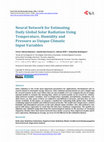
Smart Grid and Renewable Energy, 2016
Solar radiation is one of the most important parameters for applications, development and researc... more Solar radiation is one of the most important parameters for applications, development and research related to renewable energy. However, solar radiation measurements are not a simple task for several reasons. In the cases where data are not available, it is very common the use of computational models to estimate the missing data, which are based mainly on the search for relationships between weather variables, such as temperature, humidity, precipitation, cloudiness, sunshine hours, etc. But, many of these are subjective and difficult to measure, and thus they are not always available. In this paper, we propose a method for estimating daily global solar radiation, combining empirical models and artificial neural networks. The model uses temperature, relative humidity and atmospheric pressure as the only climatic input variables. Also, this method is compared with linear regression to verify that the data have nonlinear components. The models are adjusted and validated using data from five meteorological stations in the province of Tucumán, Argentina. Results show that neural networks have better accuracy than empirical models and linear regression, obtaining on average, an error of 2.83 [MJ/m2] in the validation dataset.
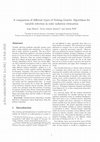
arXiv preprint arXiv:2002.06036, 2020
Variable selection problems generally present more than a single solution and, sometimes, it is w... more Variable selection problems generally present more than a single solution and, sometimes, it is worth to find as many solutions as possible. The use of Evolutionary Algorithms applied to this kind of problem proves to be one of the best methods to find optimal solutions. Moreover, there are variants designed to find all or almost all local optima, known as Niching Genetic Algorithms (NGA). There are several different NGA methods developed in order to achieve this task. The present work compares the behavior of eight different niching techniques, applied to a climatic database of four weather stations distributed in Tucuman, Argentina. The goal is to find different sets of input variables that have been used as the input variable by the estimation method. Final results were evaluated based on low estimation error and low dispersion error, as well as a high number of different results and low computational time. A second experiment was carried out to study the capability of the method to identify critical variables. The best results were obtained with Deterministic Crowding. In contrast, Steady State Worst Among Most Similar and Probabilistic Crowding showed good results but longer processing times and less ability to determine the critical factors.
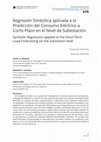
Revista Tecnología y Ciencia, 2020
El modelado de datos es un problema fundamental en diversas áreas del conocimiento. La Regresión ... more El modelado de datos es un problema fundamental en diversas áreas del conocimiento. La Regresión Simbólica es una técnica que permite encontrar una relación matemática para describir un conjunto de datos experimentales. A diferencia de los métodos tradicionales de modelado, la Programación Genética permite encontrar una expresión matemática susceptible de ser analizada e interpretada. Multi-Expression Programming es una variante de Programación Genética, que presenta múltiples ventajas, haciéndola apta para su uso en casos reales. En este trabajo proponemos aplicar dicha variante para descubrir modelos de predicción, un día hacia adelante, de la corriente eléctrica de fase de una subestación transformadora en Tucumán, Argentina. Para analizar el comportamiento del algoritmo y ajustar parámetros, se realizaron pruebas utilizando Benchmarks conocidos. Se concluye que Multi-Expression Programming es adecuada para encontrar modelos en problemas complejos, y en el caso de predicción de corriente eléctrica se logró un nivel de error similar al obtenido con otras técnicas.
patents by Victor Adrian Jimenez

Métodos aplicados para la selección de variables de entrada en la predicción del consumo eléctrico en el corto plazo
IV Congreso Nacional de Ingeniería en Informática/Sistemas de Información, 2016
La presente invención pertenece al campo técnico de la medición de variables y análisis de datos ... more La presente invención pertenece al campo técnico de la medición de variables y análisis de datos en sistemas de provisión y distribución de energía eléctrica en general, en particular, enfocado a la identificación de fase y vinculación con la Subestación Transformadora de clientes en redes de distribución de baja tensión y Microgrids. La misma se refiere a un método para la identificación de fases y la vinculación con transformadores en redes de distribución de electricidad de baja tensión, basado en un procedimiento estocástico de optimización combinatoria, el cual requiere mediciones sincronizadas de la energía consumida por cada fase de los Nodos Fuente de Energía (distribuidores) y de la energía consumida individualmente por al menos un 10\% de los Nodos Consumidores de Energía (clientes) conectados a una Microgrid, donde al menos 70\% de dichos Nodos Consumidores de Energía reciben energía de dicho Nodo Fuente de Energía y es resistente a falta de datos.

Disposición de unidades electrónicas y procedimiento para controlar y regular el consumo de energía de aparatos en una red eléctrica
Instituto Nacional de la Propiedad Industrial, 2016
Una disposición de unidades electrónicas de control y regulación del suministro de energía eléctr... more Una disposición de unidades electrónicas de control y regulación del suministro de energía eléctrica de aparatos, ya sea en redes de distribución de corriente continua, así como en redes de distribución de corriente alterna, para evitar cortes de suministro de energía eléctrica por picos de consumo, y para proteger las instalaciones de proveedores y usuarios, que comprende una unidad de control y regulación de consumo de energía eléctrica denominada unidad CID, conectada a uno o más aparatos que consumen energía, un actuador que modifica el nivel de consumo de uno o más aparatos, una unidad de control denominada NFE, instalada en un nodo de distribución de una red eléctrica, una infraestructura de comunicación que envía datos desde una unidad NFE hacia una o más unidades CID, donde dichas unidades CID determinan el estado de consumo de uno o más aparatos conectado a dichas unidades CID, y fijan dicho estado de consumo a través de dichos actuadores, de manera autónoma, descentralizada, y maximizando el Confort Térmico Humano de acuerdo a la energía disponible en su unidad NFE, y su procedimiento.
phdtheses by Victor Adrian Jimenez

Análisis inteligente de datos aplicado a la gestión y optimización de redes de distribución eléctrica
La demanda de electricidad se ha incrementado de manera sostenida en la última década, aumentado ... more La demanda de electricidad se ha incrementado de manera sostenida en la última década, aumentado considerablemente las exigencias en el suministro de energía. A pesar de ello, los sistemas eléctricos de Transmisión y Distribución han seguido operando de la misma manera con mínima inversión, resultando en sistemas eléctricos ineficientes y cada vez más inestables. Esto generó la necesidad de un nuevo sistema de red inteligente que pueda manejar eficientemente este panorama. Las Redes Eléctricas Inteligentes o Smart Grids (SG) posibilitan el acceso a datos sobre la red eléctrica en tiempo real, permitiendo la implementación de soluciones que respaldan o asisten en la toma de decisiones y optimizar así la gestión de la distribución eléctrica. Sin embargo, el progreso de las Smart Grids en Argentina es relativamente lento, y la aplicación de dichas técnicas resulta un verdadero desafío por la falta de información requerida para implementarlas. Se propone en esta Tesis el desarrollo de un conjunto de algoritmos basados en técnicas de Inteligencia Artificial y Análisis de Datos, para la asistencia en la toma de decisiones. El objetivo de este trabajo es mejorar la eficiencia, optimizar el uso de recursos involucrados en el sistema de distribución, y reducir las inversiones necesarias para lograrlo, especialmente en la última milla y considerando la limitada disponibilidad de información que tenemos en nuestro país. En pos de lograr esta meta, se propone en primer lugar un método para estimar la vida útil de transformadores de distribución, determinando el impacto que sufren estos equipos por sobrecargas. El mismo utiliza un modelo matemático basado en normas de cargabilidad internacionales, el cual fue ajustado para su correcto uso bajo condiciones locales. El sistema utiliza Algoritmos Genéticos para optimizar los parámetros involucrados, agregándose además estimaciones de radiación solar para incluirlas en el modelo térmico. Luego, se abordó el problema de la identificación de fases y detección del transformador para clientes domiciliarios dentro de la red de distribución eléctrica de baja potencia, como parte principal de la tesis. Las estimaciones de fase de clientes permiten reducir el tiempo de respuesta de las contingencias, mejorar la detección de pérdidas y aplicar diferentes técnicas para mejorar la calidad del servicio y la eficiencia de la gestión del sistema de distribución eléctrica y del uso de la energía. Se desarrollaron dos métodos diferentes para la identificación de fase y detección de transformador, el primero basado en análisis estadístico y el segundo basado en Algoritmos Evolutivos. Los mismos presentan como ventaja frente a métodos similares, que no requieren el uso de equipos especializados y funcionan con baja penetración de medidores inteligentes. Por último, se propone una aplicación de la identificación de fases al problema de balance la carga en transformadores trifásicos, minimizando la inversión necesaria. Finalmente, para validar las propuestas se utilizaron datos reales provistos por la Empresa de Distribución de Eléctrica de Tucumán. A través de ellos se hicieron diferentes simulaciones que permitieron determinar la precisión de las estimaciones realizadas, como así también la eficiencia de los algoritmos.
inproceedings by Victor Adrian Jimenez
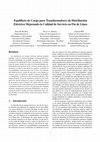
12vo Congreso Nacional de Ingeniería Informática / Sistemas de Información, 2024
La distribución de energía eléctrica enfrenta desafíos globales, como la creciente demanda, la in... more La distribución de energía eléctrica enfrenta desafíos globales, como la creciente demanda, la integración de generación distribuida, las pérdidas elevadas y la necesidad de mejorar la calidad del servicio. En particular, el desbalance de cargas, donde las cargas no están distribuidas uniformemente entre las fases de los circuitos, puede reducir la eficiencia, acortar la vida útil de los equipos y aumentar la susceptibilidad a interrupciones del servicio. Los métodos que implican mover cargas de una fase a otra pueden ser costosos, pero son efectivos cuando se dispone de medidores inteligentes y se llevan a cabo de manera eficiente. Este trabajo propone el uso de algoritmos genéticos para identificar de manera óptima las cargas a redistribuir, con el fin de mejorar tanto el balance de cargas como la calidad de la tensión en los nodos finales de la red, minimizando la cantidad de cambios necesarios. El algoritmo fue evaluado mediante simulaciones utilizando PandaPower, una herramienta de análisis de flujo de carga, modelando redes simples basadas en características reales del sistema eléctrico en Tucumán.
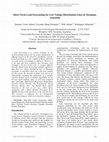
5to Congreso Nacional de Ingeniería Informática / Sistemas de Información (CoNaIISI 2017), 2017
Load forecasting is a critical technique in the decision-making process for the proper management... more Load forecasting is a critical technique in the decision-making process for the proper management of different aspects of the electricity distribution network. Load Forecasting is a very complex problem, and there is a wide variety of techniques to address it. However, it is the data and local conditions that determine what technique is the best. In this work, we compare different One-Day-Ahead Load Forecasting methods, applied to data from low voltage distribution lines in Tucumán, Argentina, to determine which one is the most suitable for this region. We describe in detail each step of the methodology, including the application of a variable selection method based on Genetic Algorithms. In the forecast model building stage, we used and compared three algorithms: Multi-Linear Regression, Radial Basis Function Neural Network, and Feed-forward Neural Network. Results show that Radial Basis Neural Networks is the best in our case, which allows predictions with a Mean Absolute Percentage Error (MAPE) between 6.9\% and 10.1\% in the selected cases. This accuracy is sufficient for the management improvement purposes of the local electricity company.
Uploads
articles by Victor Adrian Jimenez
patents by Victor Adrian Jimenez
phdtheses by Victor Adrian Jimenez
inproceedings by Victor Adrian Jimenez